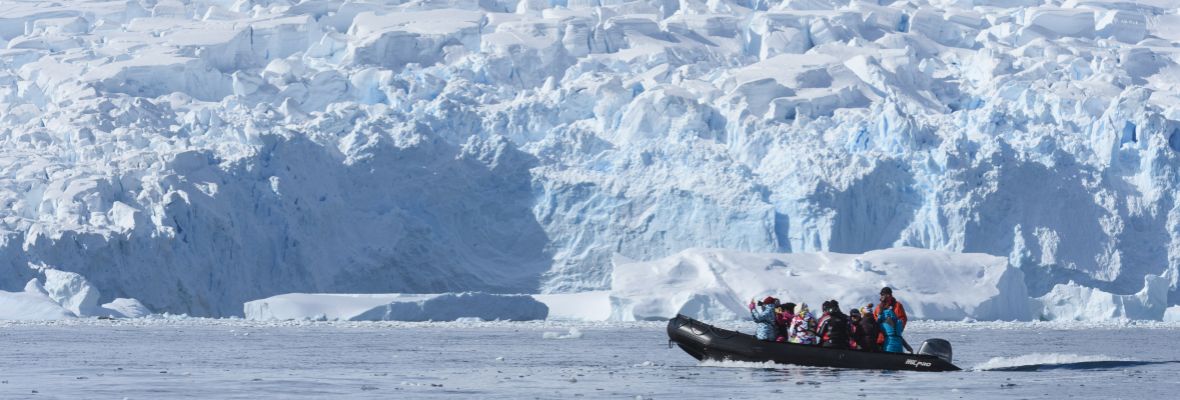We are thrilled to announce the official launch of our new website, Polar Latitudes Expeditions. Discover more in our latest news update, and visit our new website polar-latitudes.com.
An experience like nowhere else on earth
An extraordinary adventure to the southernmost part of the world, brings forth colossal icebergs, unbelievable seascapes, and the unpredictable nature that polar explorers spent their lives trying to conquer.
An icy wonderland at the end of the world, which for many centuries wasn’t explored and became the subject of admiration and obsession of the first world expeditioners, Antarctica only acquired its official name in the 1800s, a Romanized version of its Greek title, which concretely enough, means opposite to the North.

To some experienced travelers, Antarctica is the crème de la crème when it comes to exploring the world, not just because of its remote location, its difficult access and challenging temperatures, but also because it is the only non-inhabited continent in our beloved planet, apart from a small research station, even now when some other areas are over populated. Antarctica has no indigenous population and there is no evidence that it was seen by humans until the 19th century. The many expeditions aiming to be the first of reaching the South Pole in the 1900s, provide us stories of survival and wondrous adventures worthy of high acclaim in the history books.
Although this vast stretch of the planet remains the stuff of distant dreams for many, its mysterious nature is reachable due to the reduction in sea ice during the summer months, which our strong, ice-classed expedition vessel, Ocean Atlantic, can easily maneuver, ensuring we get close to the dramatic coastlines. Zodiac cruising and shore landings are an important and considerable part of the planned itinerary, enabling all expedition guests to set foot several times on the Antarctic continent, as well as the many surrounding sub-Antarctic islands.

Can you visualize the splendor of the coldest continent appearing before our eyes? With its mighty tabular icebergs, it is a sight like no other. We will cross the unbelievable Drake Passage. The white shimmer of Antarctica looming on our horizon, the presence of wildlife multiplying by tens of thousands with many species of lively penguins, inquisitive seals, nesting birds and the spray of marine mammals. The sub-Antarctic and Antarctic islands are a nature photographer’s paradise.
Antarctica’s beauty exceeds everything imaginable. Vastly different from the Arctic, 98% of the Great White Continent is covered in ice with glaciers, smooth ice-sheet and glaciated mountains with volcanoes. Crisp white icebergs and deep blue seas, flank the barren, rocky coastlines, which are home to moss, lichens, liverworts and even two small flowering plants – the Antarctic pearl wart and Antarctic hair grass. The sub-Antarctic islands and Falklands have tundra-like landscapes.

Due to the harsh climate, there are no terrestrial mammals, yet a plethora of wildlife still call Antarctica home – at least in the warmer summer months when temperatures hover just above freezing! The prolific birdlife, penguin colonies and marine mammals, such as whales, porpoises and seals, provide rewarding wildlife observation.
There will typically be crisp, autumn-like weather in Patagonia and the Falkland Islands, and near-freezing temperatures on the Antarctic Peninsula. Antarctica is a frozen desert where winds shape the surface of snow and ice, and average annual precipitation is only 10cm.
When Ocean Atlantic returns to Tierra del Fuego and Ushuaia, we pass close to the mythical Cape Horn - the southernmost point on South America; a celebrated maritime landmark. By the time you return home from this remarkable journey, your perspective of our planet will have changed forever, and we are certain the sights and experiences of this trip, will find a special place in your heart.



